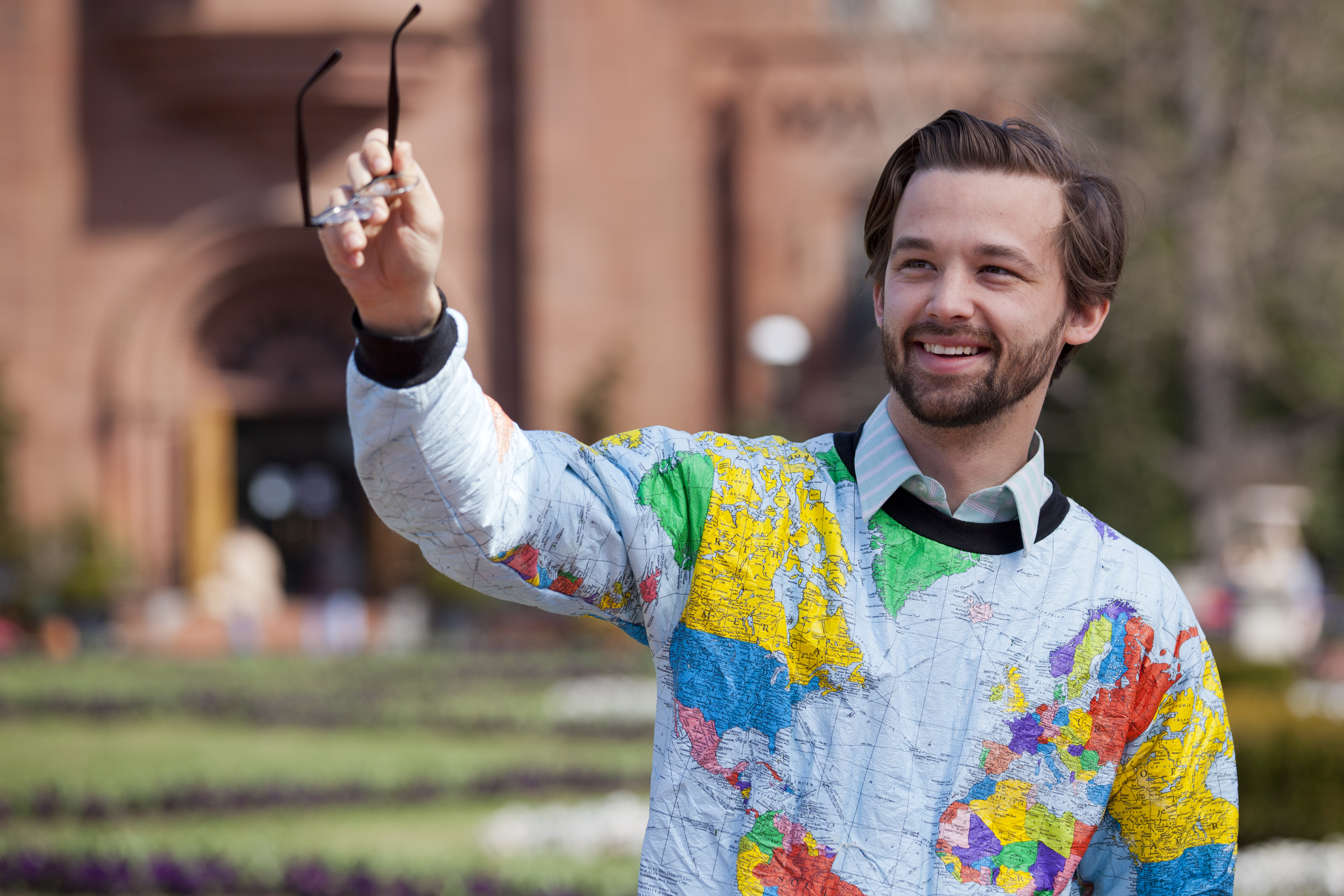From incandescent bulbs to fluorescents to LEDs, we're exploring the long history of the light bulb.
November 22, 2013More than 150 years ago, inventors began working on a bright idea that would have a dramatic impact on how we use energy in our homes and offices. This invention changed the way we design buildings, increased the length of the average workday and jumpstarted new businesses. It also led to new energy breakthroughs -- from power plants and electric transmission lines to home appliances and electric motors.
Like all great inventions, the light bulb can’t be credited to one inventor. It was a series of small improvements on the ideas of previous inventors that have led to the light bulbs we use in our homes today.
Incandescent Bulbs Light the Way
Long before Thomas Edison patented -- first in 1879 and then a year later in 1880 -- and began commercializing his incandescent light bulb, British inventors were demonstrating that electric light was possible with the arc lamp. In 1835, the first constant electric light was demonstrated, and for the next 40 years, scientists around the world worked on the incandescent lamp, tinkering with the filament (the part of the bulb that produces light when heated by an electrical current) and the bulb’s atmosphere (whether air is vacuumed out of the bulb or it is filled with an inert gas to prevent the filament from oxidizing and burning out). These early bulbs had extremely short lifespans, were too expensive to produce or used too much energy.
When Edison and his researchers at Menlo Park came onto the lighting scene, they focused on improving the filament -- first testing carbon, then platinum, before finally returning to a carbon filament. By October 1879, Edison’s team had produced a light bulb with a carbonized filament of uncoated cotton thread that could last for 14.5 hours. They continued to experiment with the filament until settling on one made from bamboo that gave Edison’s lamps a lifetime of up to 1,200 hours -- this filament became the standard for the Edison bulb for the next 10 years. Edison also made other improvements to the light bulb, including creating a better vacuum pump to fully remove the air from the bulb and developing the Edison screw (what is now the standard socket fittings for light bulbs).
(Historical footnote: One can’t talk about the history of the light bulb without mentioning William Sawyer and Albon Man, who received a U.S. patent for the incandescent lamp, and Joseph Swan, who patented his light bulb in England. There was debate on whether Edison’s light bulb patents infringed on these other inventors’ patents. Eventually Edison’s U.S. lighting company merged with the Thomson-Houston Electric Company -- the company making incandescent bulbs under the Sawyer-Man patent -- to form General Electric, and Edison’s English lighting company merged with Joseph Swan’s company to form Ediswan in England.)
What makes Edison’s contribution to electric lighting so extraordinary is that he didn’t stop with improving the bulb -- he developed a whole suite of inventions that made the use of light bulbs practical. Edison modeled his lighting technology on the existing gas lighting system. In 1882 with the Holborn Viaduct in London, he demonstrated that electricity could be distributed from a centrally located generator through a series of wires and tubes (also called conduits). Simultaneously, he focused on improving the generation of electricity, developing the first commercial power utility called the Pearl Street Station in lower Manhattan. And to track how much electricity each customer was using, Edison developed the first electric meter.
While Edison was working on the whole lighting system, other inventors were continuing to make small advances, improving the filament manufacturing process and the efficiency of the bulb. The next big change in the incandescent bulb came with the invention of the tungsten filament by European inventors in 1904. These new tungsten filament bulbs lasted longer and had a brighter light compared to the carbon filament bulbs. In 1913, Irving Langmuir figured out that placing an inert gas like nitrogen inside the bulb doubled its efficiency. Scientists continued to make improvements over the next 40 years that reduced the cost and increased the efficiency of the incandescent bulb. But by the 1950s, researchers still had only figured out how to convert about 10 percent of the energy the incandescent bulb used into light and began to focus their energy on other lighting solutions.
Energy Shortages Lead to Fluorescent Breakthroughs
In the 19th century, two Germans -- glassblower Heinrich Geissler and physician Julius Plücker -- discovered that they could produce light by removing almost all of the air from a long glass tube and passing an electrical current through it, an invention that became known as the Geissler tube. A type of discharge lamp, these lights didn’t gain popularity until the early 20th century when researchers began looking for a way to improve lighting efficiency. Discharge lamps became the basis of many lighting technologies, including neon lights, low-pressure sodium lamps (the type used in outdoor lighting such as streetlamps) and fluorescent lights.
Both Thomas Edison and Nikola Tesla experimented with fluorescent lamps in the 1890s, but neither ever commercially produced them. Instead, it was Peter Cooper Hewitt’s breakthrough in the early 1900s that became one of the precursors to the fluorescent lamp. Hewitt created a blue-green light by passing an electric current through mercury vapor and incorporating a ballast (a device connected to the light bulb that regulates the flow of current through the tube). While the Cooper Hewitt lamps were more efficient than incandescent bulbs, they had few suitable uses because of the color of the light.
By the late 1920s and early 1930s, European researchers were doing experiments with neon tubes coated with phosphors (a material that absorbs ultraviolet light and converts the invisible light into useful white light). These findings sparked fluorescent lamp research programs in the U.S., and by the mid and late 1930s, American lighting companies were demonstrating fluorescent lights to the U.S. Navy and at the 1939 New York World’s Fair. These lights lasted longer and were about three times more efficient than incandescent bulbs. The need for energy-efficient lighting American war plants led to the rapid adoption of fluorescents, and by 1951, more light in the U.S. was being produced by linear fluorescent lamps.
It was another energy shortage -- the 1973 oil crisis -- that caused lighting engineers to develop a fluorescent bulb that could be used in residential applications. In 1974, researchers at Sylvania started investigating how they could miniaturize the ballast and tuck it into the lamp. While they developed a patent for their bulb, they couldn’t find a way to produce it feasibly. Two years later in 1976, Edward Hammer at General Electric figured out how to bend the fluorescent tube into a spiral shape, creating the first compact fluorescent light (CFL). Like Sylvania, General Electric shelved this design because the new machinery needed to mass-produce these lights was too expensive.
Early CFLs hit the market in the mid-1980s at retail prices of $25-35, but prices could vary widely by region because of the different promotions carried out by utility companies. Consumers pointed to the high price as their number one obstacle in purchasing CFLs. There were other problems -- many CFLs of 1990 were big and bulky, they didn’t fit well into fixtures, and they had low light output and inconsistent performance. Since the 1990s, improvements in CFL performance, price, efficiency (they use about 75 percent less energy than incandescents) and lifetime (they last about 10 times longer) have made them a viable option for both renters and homeowners. Nearly 30 years after CFLs were first introduced on the market, an ENERGY STAR® CFL costs as little as $1.74 per bulb when purchased in a four-pack.
LEDs: The Future is Here
One of the fastest developing lighting technologies today is the light-emitting diode (or LED). A type of solid-state lighting, LEDs use a semiconductor to convert electricity into light, are often small in area (less than 1 square millimeter) and emit light in a specific direction, reducing the need for reflectors and diffusers that can trap light.
They are also the most efficient lights on the market. Also called luminous efficacy, a light bulb’s efficiency is a measure of emitted light (lumens) divided by power it draws (watts). A bulb that is 100 percent efficient at converting energy into light would have an efficacy of 683 lm/W. To put this in context, a 60- to 100-watt incandescent bulb has an efficacy of 15 lm/W, an equivalent CFL has an efficacy of 73 lm/W, and current LED-based replacement bulbs on the market range from 70-120 lm/W with an average efficacy of 85 lm/W.
In 1962 while working for General Electric, Nick Holonyak, Jr., invented the first visible-spectrum LED in the form of red diodes. Pale yellow and green diodes were invented next. As companies continued to improve red diodes and their manufacturing, they began appeari
What are the key facts?
Like all great inventions, the light bulb can’t be credited to one inventor.
It was a series of small improvements on the ideas of previous inventors that have led to the light bulbs we use in our homes today.
Learn more about the history of the incandescent light bulb.
Explore the history of fluorescent lights, from the Geissler tube to CFLs.
Read about the advancements in LED lights.
Rebecca Matulka

Rebecca Matulka served as a digital communications specialist for the Energy Department. In 2012, she joined the Energy.gov team, covering all things energy efficiency -- from fuel cells and vehicle technologies to advancements in manufacturing and consumer energy efficiency tips. Previously, Rebecca worked at an environmental nonprofit, where she built the organization's digital presence and spearheaded its rebranding efforts.
An avid reader and a want-to-be master chef, Rebecca spends her free time with her nose buried in the latest fiction best seller or trying out new recipes. She can also be seen walking her dog Miette -- the world's cutest pomeranian -- around D.C.



